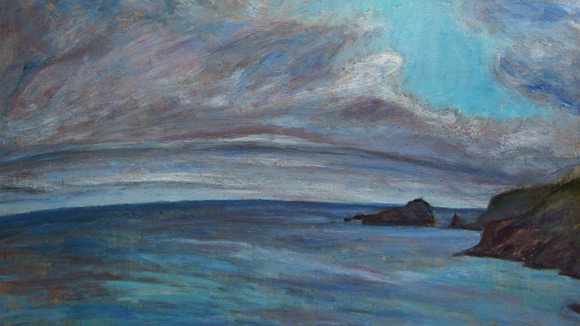
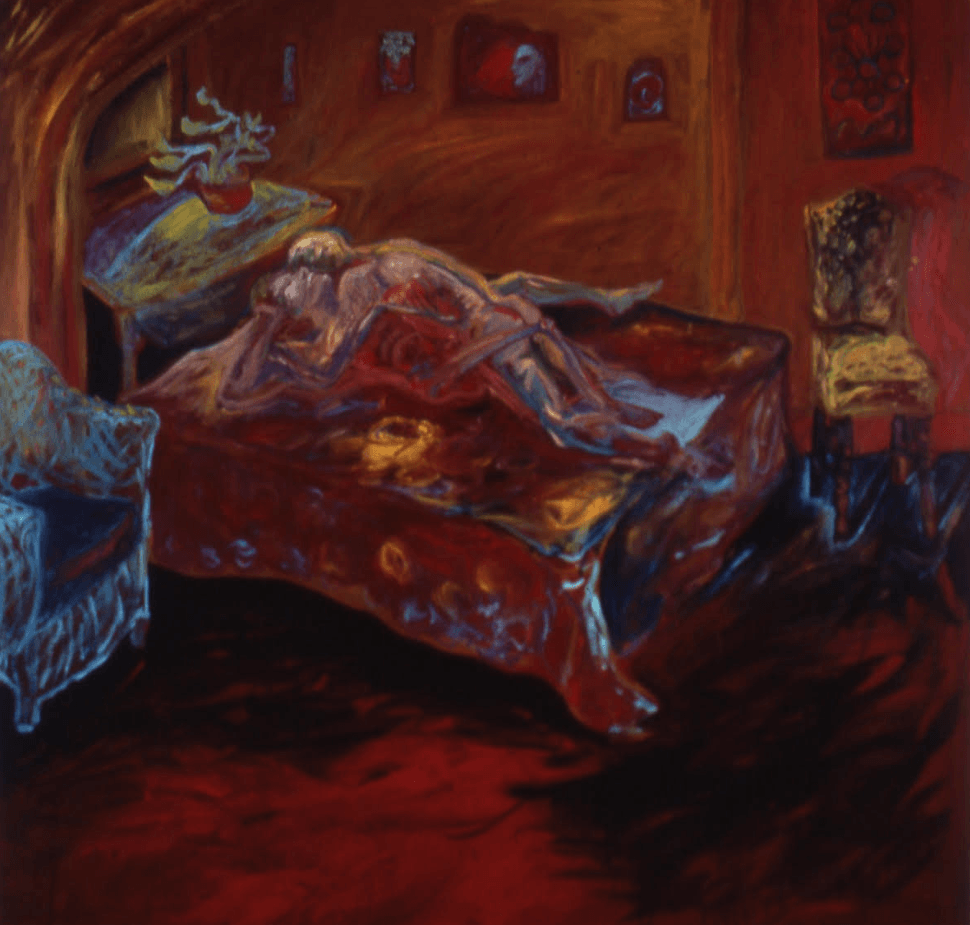
The dream-like spaces Rae Johnson paints in her series called Interiors are like inner rooms with human figures defined in the limited detail of liminal consciousness. The figures here are otherworldly or ghostlike, occupying something similar to Buddhism’s Bardo state of in-between lives. Her created world in this series is a visiting of her dreams and imagination.
Her large painting Red Restaurant Interior is a room of otherworldly figures headed on a journey in a Hopperesque old fashioned train car diner. Out the window is a blurred green landscape with a small patch of blue toward the tops of the windows which has the same intense red in it as the room. There is considerable movement in the composition of this painting. The row of stools from the front right leading down to the figures in the back, the swirls along the length of the countertop are similar to the curves in the rounded figures and are in opposition to the straight lines along the ceiling and both sides of the room.
This work points to another plane that does not have to adhere to the rules of our conscious world. The perspective is off, things are twisted. There is a surprising amount of light entering behind the three figures at the end. It is almost as if something has exploded behind them or as though they are in front of a blank lit up film screen.
As Rae Johnson notes: “I did not put faces on them …If they are faceless just the way our brains are hardwired the viewer has to will or superimpose some kind of a face or will struggle to make sense out of these nearly blank spaces. So they will be more real to the viewer. If I gave them features it would detract”.
The graphite drawings on gesso canvas sometimes mixed with mineral spirits have slightly more detail than her paintings. She describes one called Happy Bar as “a bit like Jean Paul Sartre’s No Exit”.
In many of these paintings there is an immanence – something is about to happen but might not happen. Is it a trapped moment, or is it about something unseen? It is as though she wants to get the maximum effect from as little as possible in these works.
These pieces are the dreams she was having where she was visiting places and meeting people who are dead. The dreams would start off in ordinary places where it was hard to see things in detail – where it was hard to find clarity or focus. These are the kinds of drawings that tend to make the viewer want to see more of them. I found it uncanny how easy it is to identify with this series. When speaking of the material world as it relates to physics, which she has researched, Johnson intimates: “I have often imagined everything on a certain vibratory scale of some kind, it’s just energy fields that can’t be penetrated by other energy fields and others that can.”
“It’s another kind of existential space. It is a nowhere – a place that is not really there” But it is there in our minds and imaginations, as the work encourages us to contemplate endings, losses and death.
Another work included is a painting of two figures on a bed with partial skeletal features in otherwise healthy bodies (except where the skin is falling off them), a work that serves as a visual reminder that sex is the beginning of death.
The presence of something mythic is so often a part of the work of Rae Johnson. In her landscapes and in her interior figures there is so often a mystic address, from her politically charged art of the early 1980s through her landscape paintings which she refers to as her ‘Nature Painting.’ These paintings seem simple at first but are charged with an expansiveness in how much is in our view, against the large amounts of sky mirroring the ground. It makes me think of Glenn Gould talking about transcendental art in the Music of Man, years ago, when he referred to this address or psychological posture in art as (secular) “god directed art”.
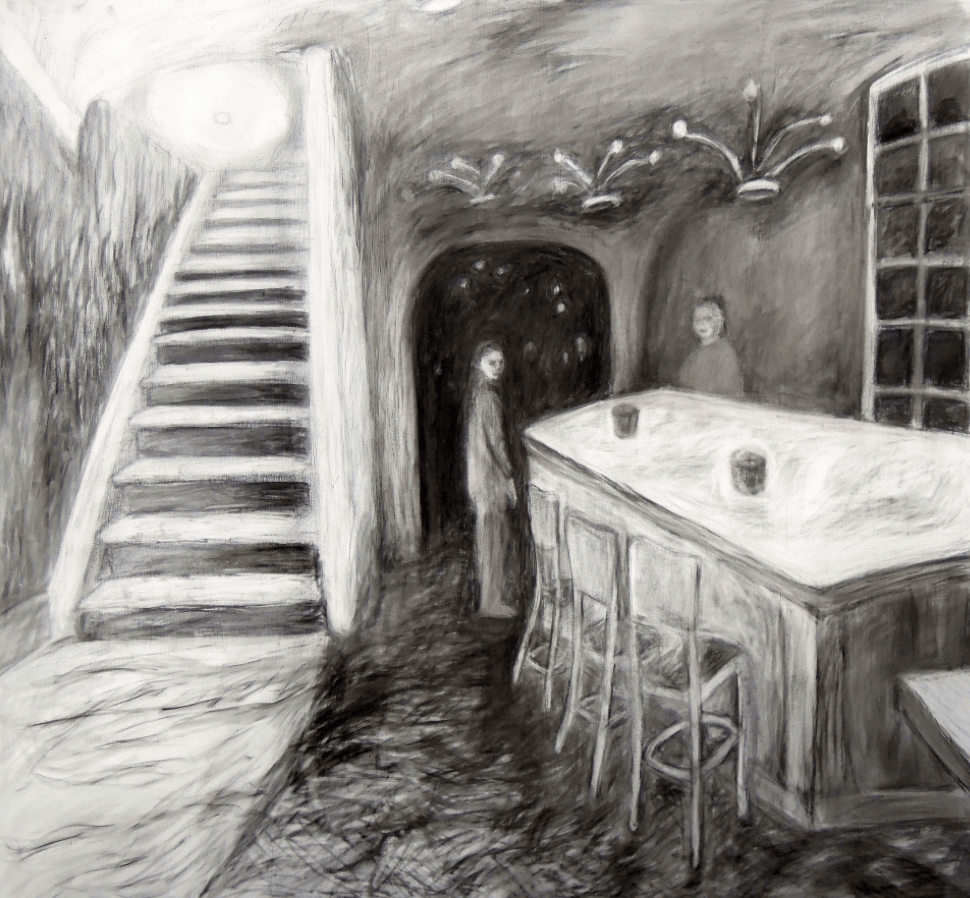
Rae Johnson is an artist who has been sometimes misunderstood, perhaps almost from the beginning when her exploration in New York (in 1979) of the world of pornography alongside a prostitute (who seemed grateful for this job rather than manual sex work) resulted in a pornographic protest art work.
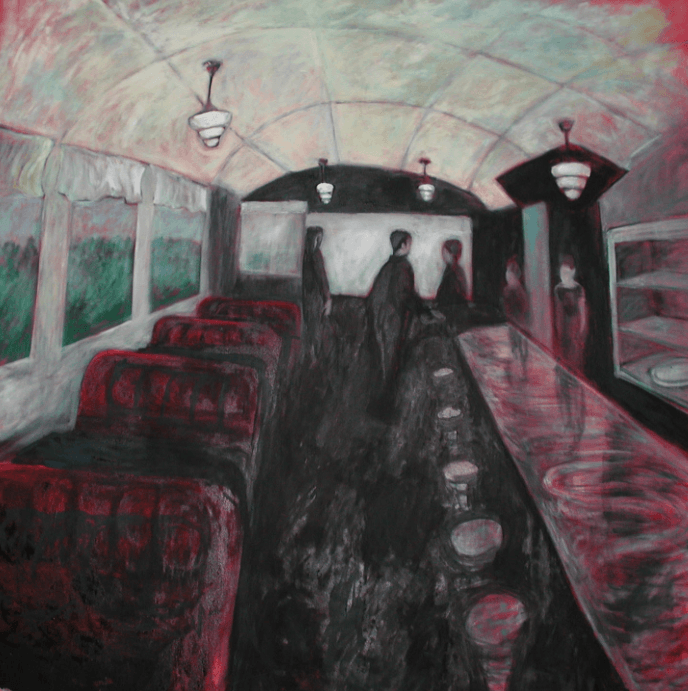
She modeled naked for Screw Magazine brothel ads, posing for photographs with a working prostitute pretending they were pals. Johnson later said, “It’s about power and control, there has to be a victim in it. It‘s really about kind of degrading somebody. That is the problem with it. That is the turn on.” She blew one of the black and white photos up and had one of the shoes she had worn in the photographs placed on a pedestal. It was intended to be a “Cinderella gone very dark.” By using her body to make those photographs and using her life as raw material she became a conceptual cartoon of pornography.
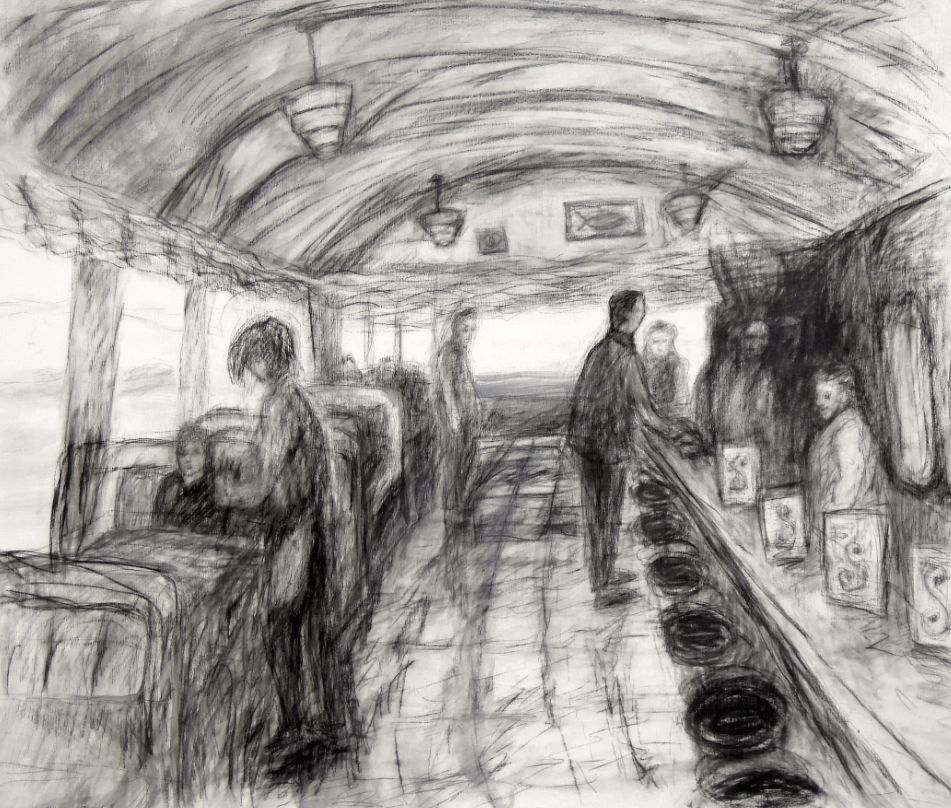
She later said, “Pornography as oppression, I wouldn’t have had that kind of language back then—the soul separated from the body… It was not generally understood that it was as a protest not an indulgence”.
Johnson’s art in the series Interiors 2014-15 is a reflection of how she sees the serious ecological decline of our planet due to human action and our collective oblivious inaction in the face of this. This consciousness is filtered through her art as a vision of our collective mental state. Johnson, like many other artists, seems intuitively close to the group of Jungian psychiatrists, including Carl Jung, who had terrifying dreams and visions of where we as a planet were headed in terms of environmental destruction. Our current standpoint is aligned with the biblical myths’ sanction of being given the planet to use by god; meanwhile, we live oblivious to our ever faster leaning toward our own destruction.
.
Ewan Whyte
..
Bio – Ewan Whyte is a writer and translator. He has written for the Globe & Mail and The Literary Review of Canada. His essays, art criticism, poetry, and translations have been widely published in journals and magazines. He has read his translations of the ancient Roman poet Catullus on public radio in the U.S. He has recently completed two books. He lives in Toronto.
